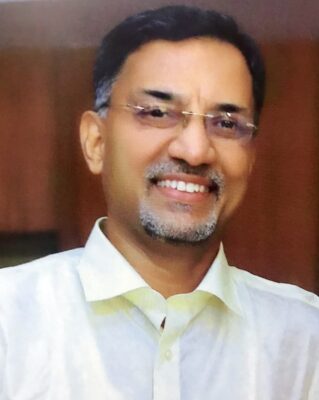9 May 2023 · Global Partnership for Zero Leprosy
Q&A: Meet Dr. P. Narasimha Rao, GPZL Leadership Team Member

GPZL Leadership Team member, Dr. P. Narasimha Rao, is the new President of the International Leprosy Association and one of our most recent additions to the GPZL Leadership Team. He reflects on his career in leprosy and how ILA and GPZL work to bring us closer to a world with no leprosy.
How did you begin working in leprosy?
My first brush with leprosy was during post-graduation in dermatology (1983-86), where leprosy patient care was a part of my responsibilities. It was also an exciting time for leprosy as MDT for leprosy was recently introduced. After completion of my post-graduation, I was posted as a medical officer at a rural Primary Health Center (PHC) in the district of Nalgonda, Andhra Pradesh, India, which was an endemic district for leprosy. This district was one of the first few where MDT was introduced by the Government of India. There was palpable enthusiasm all around, as the introduction of MDT galvanized both the government and NGOs in the care of leprosy. I was fortunate to be part of it as a medical officer at a point-of-care zone. I worked at various medical college hospitals as faculty in charge of leprosy care for the next three decades, which introduced me to research in leprosy. Later, I was awarded a Ph.D. for my work in the therapy of leprosy.
Can you tell us about your role as the President of the International Leprosy Association (ILA)?
ILA is a hallowed association founded in 1931 as a professional body working to understand and relieve the problems associated with leprosy. Since its inception, the primary goal of the ILA has been to provide up-to-date medically and scientifically accurate information about this disease to all professionals who desire such knowledge. The ILA hosts the International Leprosy Congress (ILC), a conference where global leprosy players and workers meet and discuss the future of leprosy. My responsibility as President of the ILA is to work with my team to strengthen this organization to achieve its desired goals and to identify and support areas of leprosy work globally.
Leprosy is a disease that often carries social stigma and discrimination. What role do you see for ILA to address this issue and promote social inclusion for persons affected by leprosy?
As already mentioned, the primary goal of the ILA has been to provide up-to-date, medically, and scientifically accurate information about this disease. While the issue of social stigma and resulting discrimination is observed in certain communities across the world, it is more of an issue when a person affected has a visible disability. Hence, early diagnosis of leprosy which prevents disability is the key to the prevention of stigma and discrimination. All efforts should be directed to strengthen this area. At the same time, ILA recognizes the importance of the inclusion of persons affected and for the same reason, we have with us a person affected as one of our councilors.
What do you hope to see the Global Partnership for Zero Leprosy accomplish in the near and long term?
GPZL has already achieved a lot over the past five years. At the same time, it is reorganizing itself at present to be more effective. We had a very fruitful meeting in Valencia, Spain in early 2023 regarding the future activities of GPZL. You will hear more about our future activities in the coming months.